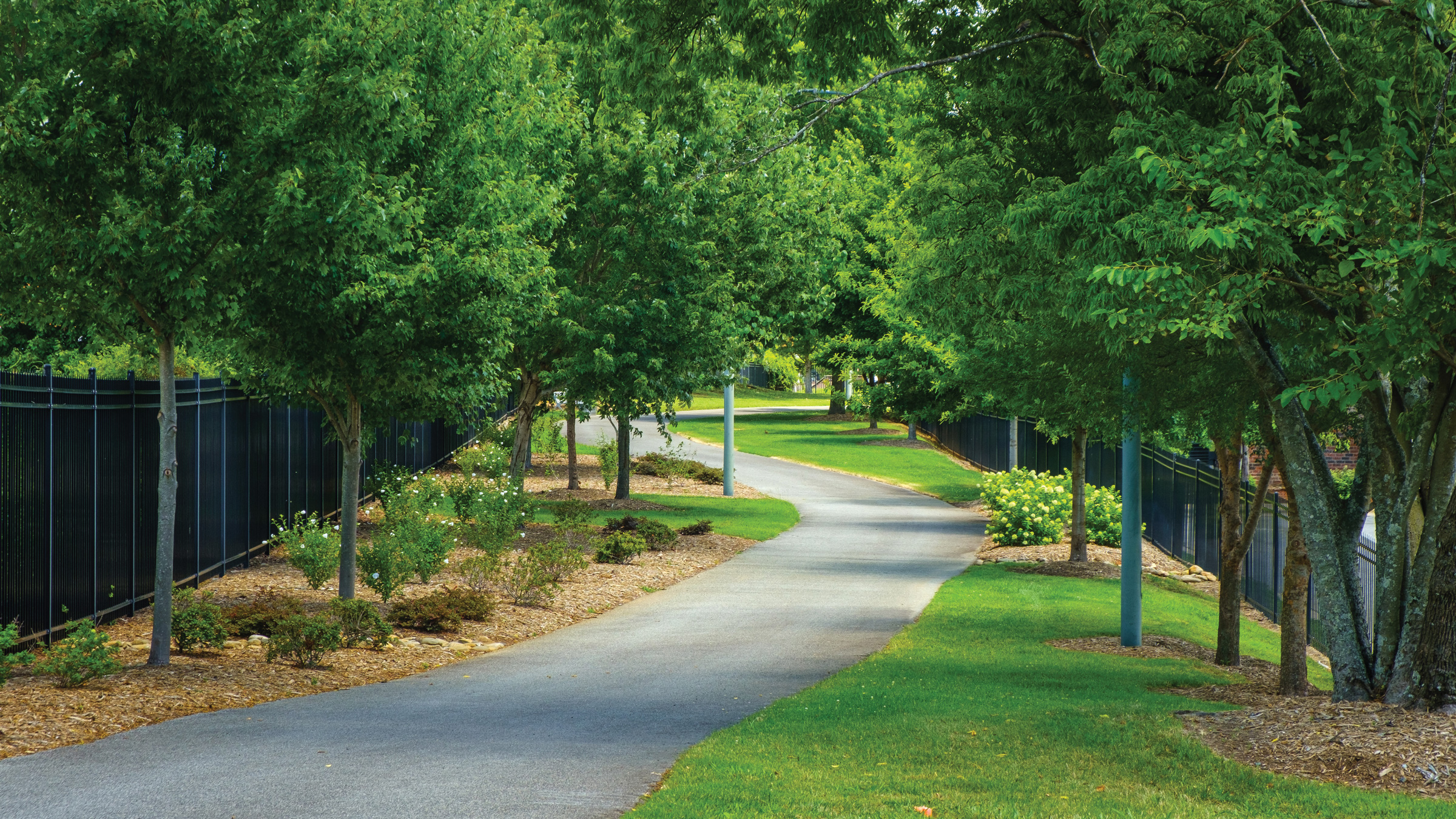
Frequently Asked Questions
When will construction be completed?
Construction is currently expected to be completed at the end of 2025, pending weather, availability of materials, or any other unexpected delays. Follow along on our News page to read the latest updates.
How can I access the greenway?
For parking needs, the Downtown Greenway has three dedicated parking lots for users to access, in addition to free on-street parking spaces adjacent to the loop, and public parking decks in the downtown area. Access is also available by public transit, with a number of bus stops located around and within the loop, in addition to being in close proximity to The Depot, Greensboro’s train station. Pedestrians and cyclists can connect to the Downtown Greenway from other adjoining greenways, sidewalks, or bike lanes. Visit our Map for details.
When is the Downtown Greenway open?
The majority of the Downtown Greenway is available for use at all times. All sections adjacent to a roadway are open 24/7. All sections that are not adjacent to a roadway are open from 5 am to 11 pm daily; this includes the southwest region of the Downtown Greenway, along the section between Spring Garden Street and South Elm Street.
In what ways can I use the greenway?
The Downtown Greenway is a shared multi-use paved path, available for pedestrians, cyclists, and other non-motorized modes of transportation, including wheelchairs, e-bikes, e-scooters. Dogs are permitted but must be kept on-leash.
What are suggested guidelines for greenway users?
To maximize your experience, Downtown Greenway users are encouraged to consider the following:
- Share the path with others, and move to the right for users to pass on the left
- Be mindful of nearby traffic and pay attention at street crossings
- Bring a water bottle or use our drinking fountains to stay hydrated (note: turned off in winter months)
- Carry a charged cell phone with you
- Keep dogs on-leash at all times, and properly dispose of any waste
- Please place any litter in our trash and recycling containers
- Listen to music at an appropriate volume level so you can remain aware of your surroundings
Are there public restrooms available?
No, there are no public restrooms located along the Downtown Greenway.
Where does the greenway connect?
The Downtown Greenway connects to other nearby greenways in Greensboro’s trails system, and is in close proximity to others in surrounding areas. Visit our Explore More page to learn more.
What safety measures are in place for users?
In case of an emergency, please call 911 for immediate assistance. Some features in place to improve our users’ experience include lighting along all sections, 12-feet of paved pathway for easier access and room to pass other users as needed, and rescue markers located at approximately quarter-mile increments for the Greensboro Fire Department’s response plan. Drinking fountains are also located along the loop to help keep users hydrated, and bike fix-it stations provide basic tools if needing to make a quick repair along the way.
How can I get involved?
There are many ways to become more involved with the Downtown Greenway! Consider taking a guided tour, attend an upcoming program or event, volunteer with us, make a donation, or become a program sponsor.
Where can I learn more and stay up-to-date on the latest?
Can I arrange a presentation for my organization?
Yes, the Downtown Greenway team is always happy to speak with groups, whenever possible. Contact us to request a custom presentation, private tour, or other speaking engagement.
Who is responsible for management of the Downtown Greenway?
The Greensboro Parks & Recreation Department oversees the daily operations, maintenance, programming, and communications for the open sections of the Downtown Greenway. To report an issue or maintenance request along the Downtown Greenway, please contact the City of Greensboro’s Contact Center at 336-373-CITY (2489) or submit online.
How has the Downtown Greenway project been funded?
The Downtown Greenway is the result of funding from both the public and private sectors, including two capital campaigns, three bond referendums, and additional sources at the local, state, and federal level. All public art was made possible through private donations.
How did the project become a reality?
The Downtown Greenway is the result of a successful public-private partnership between Action Greensboro and the City of Greensboro. Visit our History page to learn more.
